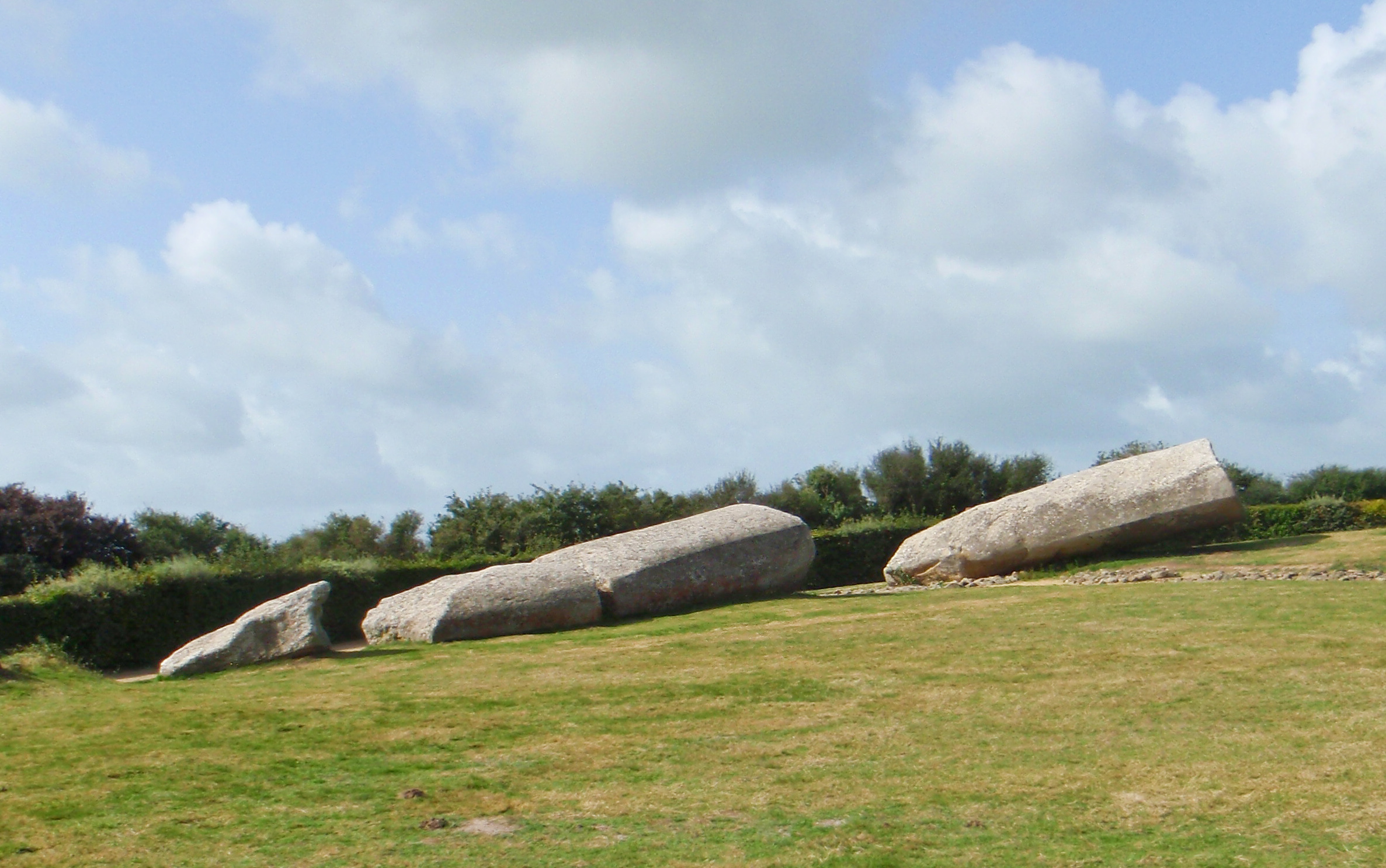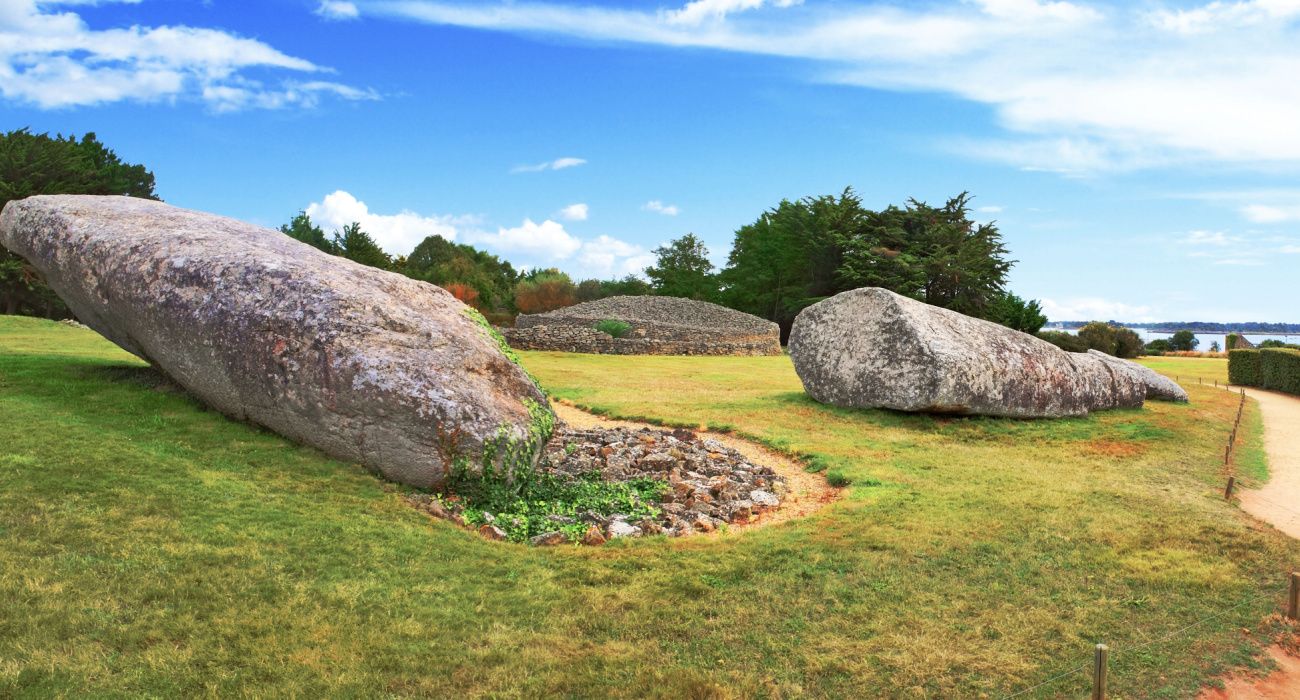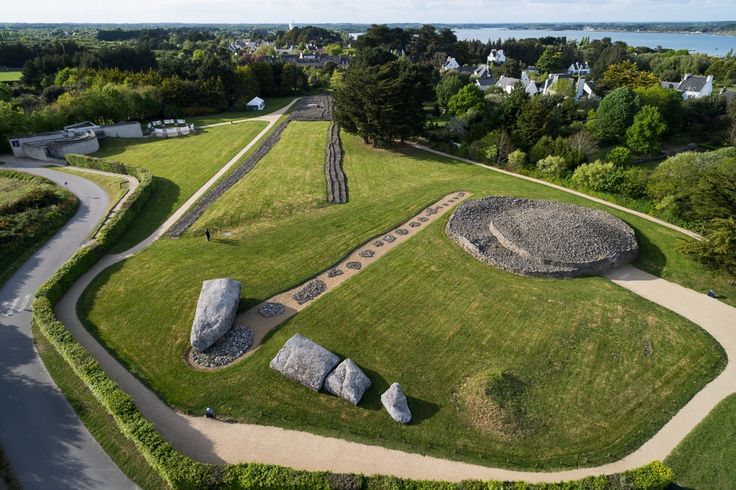The Menhir of Er Grah, located in Locmariaquer, Brittany, France, stands as a monumental testament to the engineering prowess of prehistoric societies. This massive stone structure, originally one of the tallest in Europe, offers an insight into the rituals, architecture, and social practices of the ancient people who erected it.
A Monumental Construction
The Menhir of Er Grah was once 20 meters tall, though it now lies broken into four large pieces. Standing at 18.5 meters when first erected around 4,500 BC, it was a colossal feat of prehistoric engineering, weighing approximately 280 tons. The menhir was crafted from stone transported from a site 10 kilometers away, showcasing the advanced logistics and organization of the era.

Once in place, the structure was meticulously shaped and polished with quartz hammers, indicating a high level of craftsmanship. The effort required to build and transport the menhir is a testament to the skill and dedication of the people who constructed it.
The Role of the Menhir in Prehistoric Society
The Menhir of Er Grah was part of a larger megalithic complex in Locmariaquer, which included other monumental structures such as the Table de Marchand dolmen and the Er Grah burial mound. These structures suggest that the area was used for ritualistic purposes, possibly related to death, burial, or celestial alignments. The menhir itself may have been a symbolic marker, aligning with certain astronomical events or religious practices that were significant to the people of the time.

While we do not know the exact purpose of the menhir, it likely had a central role in the cultural and spiritual practices of the society that created it. It might have served as a place for worship, marking the boundaries of sacred spaces or acting as a guidepost for rituals tied to the celestial world.
The Mysterious Destruction
The demolition of the menhir around 4,300 to 4,200 BC remains an enduring mystery. While no definitive explanation has been uncovered, several theories exist. One possibility is that the menhir was destroyed by an earthquake, a natural disaster that could have caused the colossal structure to collapse. Another theory suggests that it may have been deliberately dismantled as part of a ritualistic or cultural practice, common in ancient societies that often repurposed monuments as their beliefs and practices evolved.

Regardless of the cause, the destruction of the menhir marks the end of an era for the monument, but it also adds to its mystique. The fact that it was torn down, despite its monumental size, shows the shifting nature of human culture and the impermanence of even the grandest constructions.
A Lasting Legacy
Despite the demolition, the Menhir of Er Grah continues to captivate archaeologists and visitors alike. Today, the site offers a glimpse into the advanced megalithic culture of prehistoric Brittany, with the remnants of the menhir still visible in the landscape. Although the structure has been reduced to fragments, the Locmariaquer megalithic complex remains one of the most important archaeological sites in Europe, attracting those who seek to understand the past.

The menhir’s legacy lies not only in its size and craftsmanship but also in the cultural and spiritual practices it represents. It stands as a reminder of the profound connection between ancient people and their landscape, as well as their ability to create lasting monuments to their beliefs.
Conclusion
The Menhir of Er Grah is more than just a stone monument; it is a symbol of the ingenuity, craftsmanship, and spirituality of the prehistoric people who created it. Its colossal size, meticulous construction, and eventual destruction are woven into the broader narrative of megalithic architecture, offering valuable insights into the ancient world. The remnants of this monumental structure continue to inspire awe, serving as a reminder of the enduring power of human creativity and the mysteries of our distant past.

